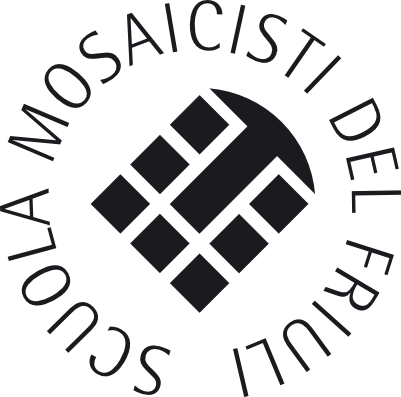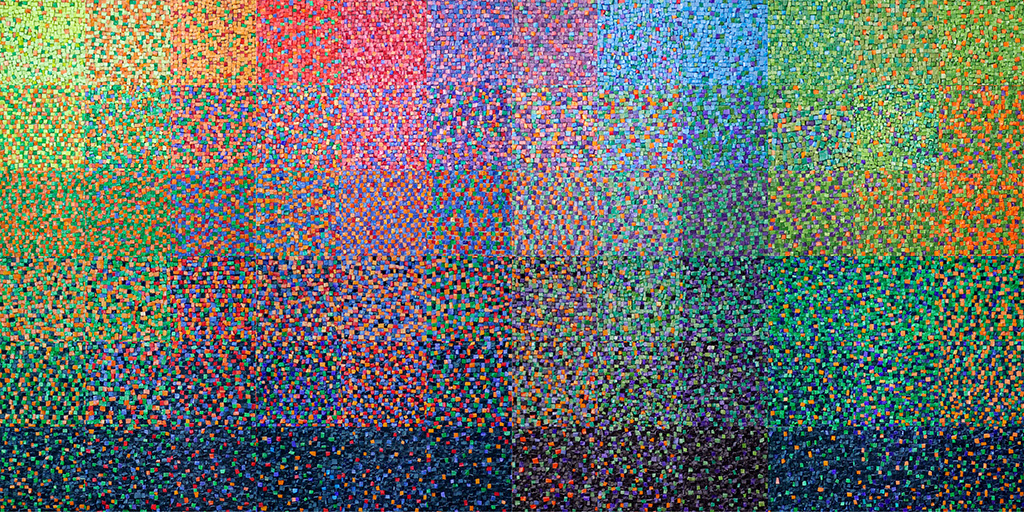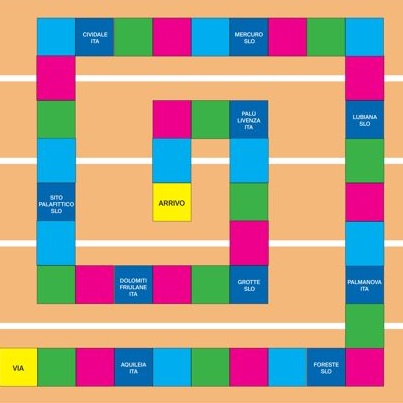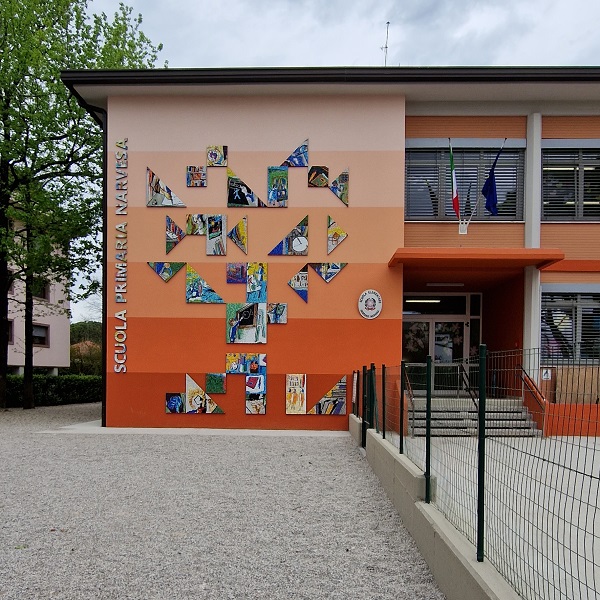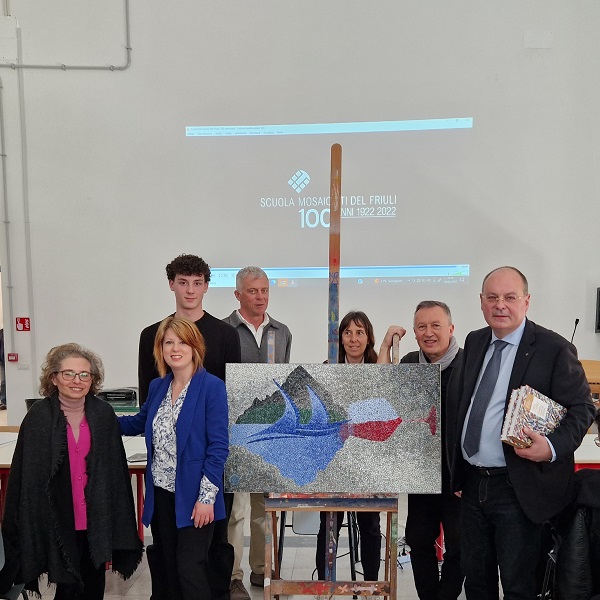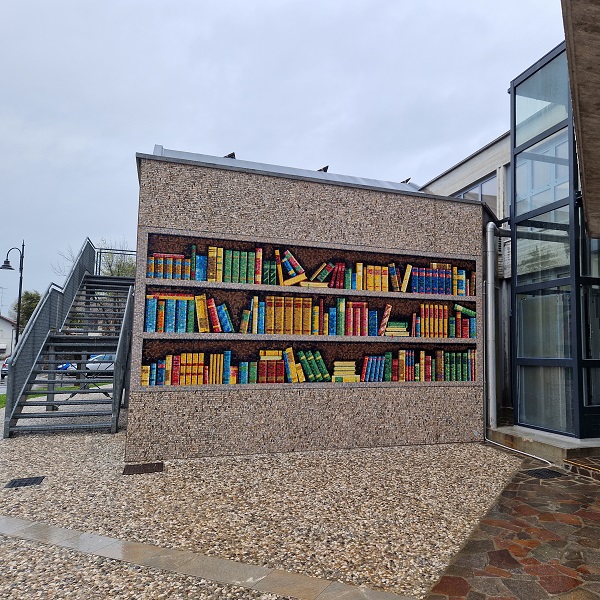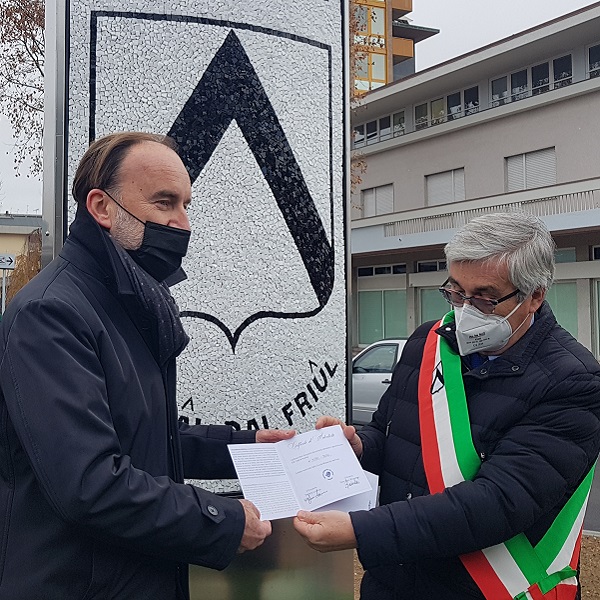
A mosaic for viale Venezia in Udine
The mosaic in the center of the new roundabout at the entrance to Viale Venezia in Udine was inaugurated yesterday. Created by the Scuola Mosaicisti del Friuli in Spilimbergo, commissioned by the Municipality of Udine and financed by Lidl Italia, the mosaic greets those who arrive in the city from the west and do so with that black and white shield, the Savorgnan family's insignia then taken on as the coat of arms and symbol of Udine. Installed by the masters of the Scuola Mosaicisti del Friuli, the mosaic was unveiled in a sober ceremony, in consideration of the moment, in the presence of the mayor of Udine, Pietro Fontanini, of the councilors Loris Michelini and Fabrizio Cigolot, of the president of the Scuola Mosaicisti del Friuli, Stefano Lovison and the director of the same Gian Piero Brovedani. The mosaic work consists of two identical panels, placed on a metal structure in the center of the rotunda, facing respectively towards those entering and leaving the city. The compositional modality is contemporary: the Venetian enamel tiles have been cut with different shapes and thicknesses; applied directly on the support to create a vibrant surface in the light, which does not flatten the design, but gives it almost relief. With yesterday, therefore, the list of mosaics present in Udine is lengthened, bearing witness to how much this ancient art has remained current, a typical expression of our region, of an artisan know-how known and appreciated all over the world. There are three examples only on viale Venezia: from the entrance hall of Spazio Venezia in via Stuparich, to the pilasters of the condomino Mauritius at numbers 109-113 and then the gilded coatings of the Ossuary Temple. We could continue by citing other religious buildings, including the church of the civil hospital dedicated to Santa Maria della Misericordia and built by the Scuola Mosaicisti del Friuli in the late 1950s. There are also the vast wall decorations in many schools and high schools carried out in compliance with the norm n. 717 of 1949, known as the 2% law which allocates part of the total cost of a public building to landscaping works; again the Palamostre Theater and the San Quirino Auditorium; historic cafes such as Contarena or Bar Delser… Mosaics that show a variety of subjects, materials, techniques, expressive forms; works very different from each other, but which both confirm the two qualities of mosaic art: the ability to withstand time and respond to functional and decorative needs.


